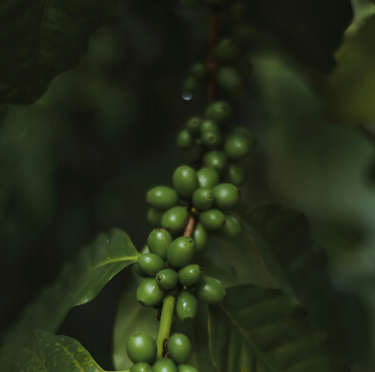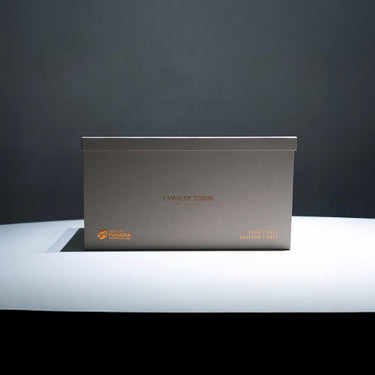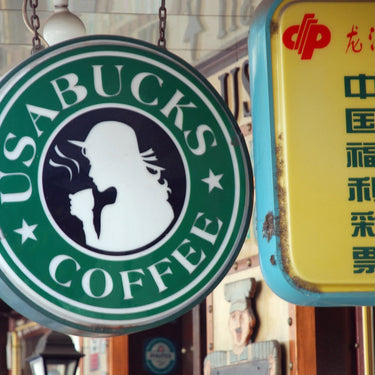The First Steps of Decaf
Before we get into the weeds of decaffeinated coffee let’s first look at how caffeine was discovered, and for that we have to go all the way back to 1819 when the legendary German author Johann Wolfgang von Goethe (yeah I hadn’t heard of him either) met the chemist Friedlieb Ferinand Runge (him too). Johann gave the chemist a box of Greek imported coffee and challenged him to find out why these beans were keeping him up at night. A year later he discovered caffeine and also worked out how to isolate it using benzene, thankfully this isn’t how we remove it now, as benzene is a carcinogen also found in gasoline and cigarette smoke. His discovery was never commercialised, presumably because the coffee must have tasted terrible.
A Happy Accident
Like so many great discoveries (penicillin, Post-it notes, me getting this job), modern day decaf was stumbled upon by accident.
In 1902, Ludwig Roselius was reeling from the early death of his father. The doctor who attended to his father before he died explained that the amount of coffee that he drank was a cause of his dad’s untimely death. It was then that the German coffee merchant decided he would dedicate his life to figuring out how to effectively remove caffeine from coffee. However, it wasn’t until disaster struck that he figured out how. During transport, a shipment of his roasted beans was caught in a storm and submerged in sea water. Most people would’ve binned them, but Roselius, being the coffee obsessive he was, decided to use them anyway. To his surprise, the beans had lost their caffeine but kept their flavour, apart from the over powering salt water taste.
Caffeine, Roselius realised, was water soluble; therefore, by saturating beans with water and flushing the beans with different chemical solutions, yeah benzene made a comeback, which bonded to the free-floating caffeine Roselius found he could greatly reduce the caffeine level of coffee.
Nazi Party (yeah)
Decaf coffee began to take off in its early years, but through a complicated promoter: the Third Reich. As the Nazi Party assumed power, its leaders recommended decaf as a way to avoid caffeine, a poison in their eyes. More than a health campaign, decaf was part of a state policy intended to preserve a healthy Aryan population.
And now for something completely different…
It is at this point in the article (as a lighter note, post Nazi revelation) it is good to bring up the myth that decaf coffee is actually completely decaffeinated. Anything that has 97% of the caffeine removed counts as decaf coffee so while it might not keep you up at night you are still getting a smaller dose of caffeine.
Another myth that people band about is that decaf is a different coffee plant variety which is definitely a myth at the moment. Scientists are currently working on ways to grow decaf coffee rather than manufacturing it but it is proving difficult on a mass scale as caffeine works as a natural pest repellent.
And finally a question a lot of us had about decaf coffee, where does the caffeine go once it is stripped out of the beans? Well it is collected in the form of powder and compacted into chalk like sticks. It is then used in the pharmaceutical industry (flu tablets) Food industry (Cola, Energy drinks) or sold in powder form.
Decaf Grows Up
For a long time, decaf coffee had a bit of a problematic reputation. It was often seen as the weak, flavourless cousin of the real thing. And, let’s be honest, for years, it kind of was. Early decaf versions had a distinctly “meh” taste, leading to the age-old question: “What’s the point? Just drink something else”. But as coffee culture exploded post WW2 more research and development went into decaf coffee.
During this period the benzene method was quickly swapped out for safer alternatives, such as the Swiss Water Process, CO2 extraction, and the sugarcane method. Each of these processes works to strip caffeine from the beans while keeping that all important flavour.
CO2 Method: this method uses natural carbon dioxide to remove caffeine while preserving the coffee’s full flavour. It starts by steaming the coffee to open the pours of the green coffee then it adds in liquid CO2 which the caffeine bonds with. The mix is then depressurised; the CO2 evaporates and you’re left with your decaf coffee beans.
Sugarcane Method: a newer addition to the decaffeination process, which uses a water solution with a compound derived from fermented sugarcane to remove caffeine. The start of the process is the same as the CO2 method but instead of adding CO2, a compound from fermented sugarcane is added in. It is drained and then a fresh solution is added. This continues for about 8 hours. Then there is a final steam to remove the traces of that sugarcane compound and it is ready to be roasted.
Swiss Water Process: this is currently the only method to boast a completely chemical-free approach to decaffeination. The green coffee is soaked in their proprietary Green Coffee Extract (“GCE”) containing all the water-soluble compounds found in coffee, except for the caffeine. The solution is heated so the coffee beans swell, and become porous. The caffeine molecules move out of the swelled coffee and into the GCE through osmosis (science GCSE call back), while the compounds that affect things like flavour and aroma are left in place. The process is repeated until the coffee is 99.9% caffeine free.
Modern Decaf: Actually Good?
Fast forward to today and decaf coffee is booming, accounting for approximately 12% of the world's yearly coffee consumption. It also shows no sign of slowing down with experts predicting that it could be worth almost 30 billion dollars by 2030.
Specialty coffee roasters (like us, ahem) have embraced decaf, applying the same obsessive care to sourcing, roasting, and brewing as they do to regular beans. Processes have continued to refine and improve and now produce decaf that actually tastes like coffee—great coffee.
So, whether you’re cutting back on caffeine, need an evening fix, or just want to see what all the fuss is about, modern decaf is definitely worth a shot (or a double shot, if that’s your thing).
Final Sip ☕️
We’ve recently launched our fourth decaf coffee (we also have a half caf coffee if you want the best of both worlds). So check out our range of expertly roasted decaf coffees, packed with all the flavour, none of the jitters and 100% no Nazis.








